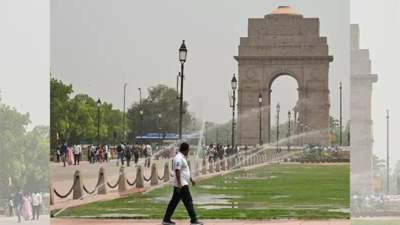- News
- Delhi AQI deteriorates again, CAQM reimposes Stage-I GRAP measures across NCR
Delhi AQI deteriorates again, CAQM reimposes Stage-I GRAP measures across NCR
Delhi-NCR reimposes Stage-I GRAP measures as the Air Quality Index (AQI) deteriorates, reaching the 'Poor' category at 209. The CAQM's decision prompts stricter monitoring, enhanced dust mitigation, and citizen charter implementation. This action follows a previous revocation three weeks prior, highlighting the ongoing challenge of managing air quality amidst fluctuating conditions and renewed dust pollution concerns.
NEW DELHI: In response to a renewed spike in pollution levels, the Commission for Air Quality Management (CAQM) has reimposed Stage-I measures of the Graded Response Action Plan (GRAP) across Delhi-NCR with immediate effect. The decision was announced in an official order on Saturday, after Delhi's Air Quality Index (AQI) climbed to 209, placing it in the ‘Poor’ category.As per the CAQM order, the Sub-Committee reviewed air quality data and forecasts from the IMD and IITM and observed a steady deterioration. “The AQI of Delhi has shown an increasing trend and has been recorded at 209 on 07.06.2025. Further, the forecast also predicts AQI to mainly remain in ‘Poor’ category in coming days,” the order stated.In light of this, the Sub-Committee has directed all agencies in NCR to invoke Stage-I actions of the extant GRAP with “immediate effect”. These include stricter monitoring of air quality levels and enhanced dust mitigation efforts, especially in Delhi-NCR. Citizens may also be urged to follow the citizen charter under Stage-I.Stage-I GRAP measures aim to prevent further air quality degradation through targeted interventions.
End of Article
Follow Us On Social Media












